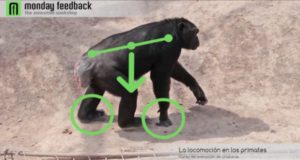We could define a film as an audiovisual work that tells us a story, where each individual shot shows a short part of that story. This way, the viewer keeps receiving the information with enough time to understand what happens, both from the cognitive as well as the emotional standpoint.
In this sense, the animator's fundamental job is telling the story contained in each shot. Perhaps, one of the animator's biggest mistakes, is to put animation ahead of the story itself. If an animator isn't able to successfully tell the story within the shot, he's generating an information hole in the movie. If this mistake is recurrent, there could be a point when the movie's story doesn't read and that the viewer loses their interest.
In this sense, the first thing we have to learn as animators, is how the narrative structure works when it comes to telling a story. We have a great example of how to tell a story in this magnificent work from Sesame Street.
Even though we can't understand a single word the two headed monster says, we all perfectly understood what he tells us.
Firstly he introduced the good and bad guys.
Secondly he tells the adventures and battles.
Lastly, he tells the happy ending.
We all understood what happens because he's using a narrative structure as he tells the story:
- Introduction. We present the environment where the story will take place, the main characters and mainly the protagonist. We will begin to develop his problems which at the end of the movie will lead to the climax.
- Build-up. Several actions occur that lead to the protagonist and the remaining characters to the climax or highest point in the movie.
- Climax. The ending of the story. It could be either closed, if all the exposed conflicts are resolved, or open, if they're open to the viewer's imagination.
We all understood the two headed monster's story because he's using this narrative structure: Introduction, build-up and climax. A way of storytelling that can be proven UNIVERSAL! is the narrative structure we utilize when telling a joke or the same narrative structure our ancestors used to tell their hunting adventures. Anybody on this planet would understand us if we told them a story using this narrative structure. So, if our mission as animators is to tell the story contained in a shot, let's use this narrative structure.
A SHOT'S NARRATIVE STRUCTURE
- Introduction. We present the elements needed to understand what happens in the shot: background, characters, props they're going to manipulate and the mini-conflict the characters have to resolve.
- Build-up. We develop the action or group of actions that lead to the protagonist resolving the conflict of the shot and that will lead him to the outcome.
- Climax. This is the ending of the story the shot tells, the initially exposed conflict is resolved or not, and normally it brings us to the next shot.
Let's see this in the following example from 'Capture the Flag'.
In this shot we have Igor trying to eat some m & ms. In the beginning of the shot there has to be an outline: we introduce Igor depressed and see how he cheers up as an m & m floats down from above. Next we see the whole build-up part, where Igor unsuccessfully tries to eat some of the m & ms. Lastly the climax: Igor is unable to do it and becomes depressed.
Try analyzing any good shot from any movie you might remember and you'll see it contains a solid narrative structure. When doing your next shot, think about the narrative structure and how you can incorporate it so that your shot reads clearly in any corner of the universe.
 MAXI DIAZ Animation blog
MAXI DIAZ Animation blog





